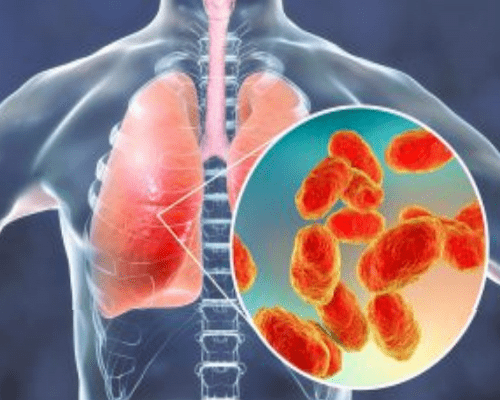A Details Discussion on Pneumonia Disease
What Do You Mean by Pneumonia?

Types of Pneumonia Disease:
The total classification of pneumonia disease have presented the below:
It includes-
- Lobar Pneumonia: Consolidation of a large portion or entire lobe of the lung.
- Bronchopneumonia: patchy consolidation in the lung.
b. Clinical Classification:
It includes-
- Community acquired pneumonia,
- Hospital-acquired pneumonia,
- Pneumonia in immune-compromised hosts,
- Pneumonia in the damaged lung.
c. Aetiological Classification:
It includes-
- Allergic: Collagen, vascular disease.
- Chemical agents: Fumes, gas.
- Physical: Irradiation.
- Fungal: Candida, Actinomycosis, and Histoplasma.
- Protozoal: E. histolytica, Toxoplasma gondii, Pneumocystis carinii.
- Mycoplasmal: M. Pneumonia.
- Chlamydial: C. Psittaci.
- Rickettsial: Typhus and Q-fever.
Bacterial:
It includes-
- Pneumococci,
- Staphylococcus aureus,
- Streptococcus pyrogens,
- Haemophilus influenza,
- Mycoplasma pneumoneae,
- Klebsiella pneumonia,
- M. Tuberculosis.
Viral:
It includes-
- Respiratory syncytial virus,
- Influenza and parainfluenza,
- Cytomegalo virus,
- Measles virus,
- Rhinovirus,
- Adenovirus.
2months to 5 years:
It includes-
- Very severe disease,
- Severe pneumonia,
- Pneumonia,
- No pneumonia: a Cough and cold.
Less than 2 months:
It includes-
- Very severe disease,
- Severe pneumonia,
- No pneumonia: a Cough and cold.
There are various causes of pneumonia disease which vary according to the age group of patient.
- Neonatal Period:
- It includes-
- E. coli,
- Group-B streptococci,
- K. pneumonia.
Post Neonatal Period:
It includes-
- H. influenza,
- Strepto. Pneumonia,
- Viruses,
- Staph, aureus.
Beyond 5 Years:
It includes-
- Chlamydia,
- Mycoplasma.
Diagnosis ways of pneumonia disease have briefly explained in the following:
Routine Examination:
a. Inspection:
It includes-
- Respiratory rate increased.
- Respiratory movement is diminished on the affected side.
b. Palpation:
It includes-
- Trachea- central, may be shifted to the opposite side (in pleural effusion).
- Apex beat-normal in position may be shifted to the opposite side.
- Chest walls movement is diminished on the affected side.
c. Percussion:
It includes-
- Woody dull in case of consolidation.
- Stony dull in case of pleural effusion.
d. Auscultation:
It includes-
- Breath sound is high pitched bronchial in consolidation and diminished.
- Vocal resonance is increased in consolidation and diminished or absent in pleural effusion.
Investigation:
It includes-
- Blood: TC, DC, ESR, and culture sensitivity test.
- Chest X-Ray test,
- Serological test: To detect the pneumococcal antigen.
- Sputum: Gram stain- Gram-positive diplococci and sensitivity- pneumococcus can be isolated.
More questions related to this topic:
- What is pneumonia?
- Describe the classification of pneumonia disease.
- Mention different types of pneumonia disease.
- What are the causes of pneumonia disease?
- Mention some common causes of pneumonia?
- What are the reasons behind pneumonia?
- Describe different diagnosis ways of pneumonia?
- Mention about the diagnosis of pneumonia.

Maria Khatun Mona is a Founder and Editor of Nursing Exercise Blog. She is a Nursing and Midwifery Expert. Currently she is working as a Registered Nurse at Evercare Hospital, Dhaka, Bangladesh. She has great passion in writing different articles on Nursing and Midwifery. Mail her at “maria.mona023@gmail.com”
